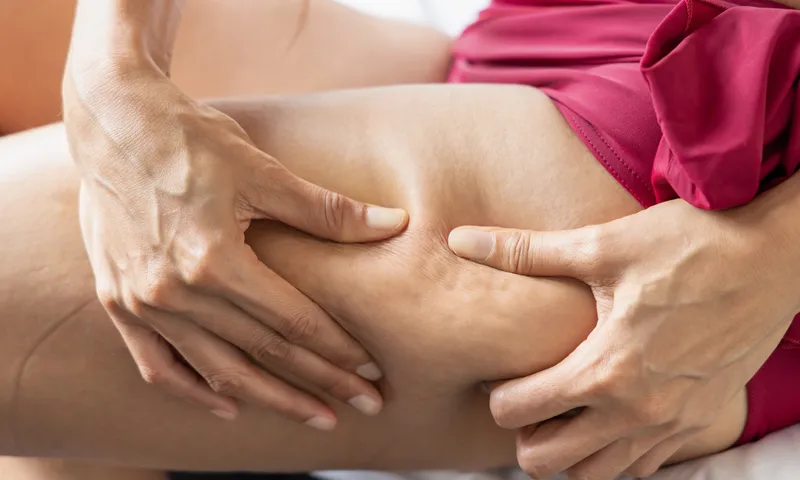Can Birth Control Cause Cellulite

Many sexually active women in their childbearing years consider starting birth control. Even though there are many options, the birth control pill is often the first choice that comes to mind and is popular due to its high effectiveness, convenience, and other benefits, such as improving acne, PMS symptoms, and regulating the menstrual cycle. However, in recent years, some have become concerned about hormonal birth control due to certain health risks, mental health impacts, or other side effects, including weight gain or other unwanted body changes.
This blog article explores the link between birth control and cellulite and whether birth control can cause cellulite. It introduces what cellulite is, discusses the side effects of hormonal birth control, and offers alternative birth control options.
What is Cellulite?
Cellulite is a bothersome but medically harmless cosmetic skin condition characterized by dimpled and lumpy skin, mainly on the thighs, buttocks, and hips. It occurs when fat cells beneath the skin push toward the skin's surface, while connective tissue bands pull downward. This results in an uneven appearance, often described as resembling the texture of an orange peel. Cellulite is very common, particularly in women, with 80-90% experiencing it to some extent. Several factors can contribute to its development or make it more noticeable, including diet, exercise, body weight, age, and hormones such as estrogen.
What are the Side Effects of Birth Control?
The side effects of birth control vary depending on the type you’re taking, your body’s response to it, and other genetic or lifestyle-related risk factors. However, some common side effects may happen with most hormonal birth control, including:
Nausea
Headaches or migraines
Decreased sex drive
Spotting between periods
Changed periods
Mood changes
Breast tenderness
Weight gain
Improvement or worsening of acne
Does Birth Control Cause Cellulite?
There is no conclusive medical evidence that hormonal birth control directly causes cellulite. However, hormones, especially estrogen, which also influences fat redistribution in the body, can affect cellulite development. Additionally, the condition often appears or worsens during times of significant hormonal change, such as puberty and pregnancy. The change in hormone levels that birth control can cause may also influence fluid retention, circulation, and collagen, which are all closely linked to cellulite.
Therefore, considering that many birth control options contain estrogen, it does not seem unlikely that birth control pills may play a role alongside other factors like genetics and lifestyle. However, as of right now, most claims that cellulite is caused by birth control rest on anecdotal observations, case reports, or small studies. While it may play a role, more research is needed in this area to be certain of how birth control and cellulite are linked.
Alternatives to Combined Hormonal Birth Control
Although there is no conclusive evidence that birth control pills containing both estrogen and progesterone can cause cellulite, you might want to avoid taking unnecessary risks, belong to a particular risk group, or simply prefer to use natural contraceptive methods. Fortunately, there are many alternatives, including progesterone-only or non-hormonal options. Progesterone-only choices include mini pills, IUDs, birth control injections, and implants, such as the following:
Mirena (IUD)
Kyleena (IUD)
Implanon (Implant)
Other non-hormonal options include a copper IUD, condoms, diaphragm, fertility awareness methods, spermicide, and sterilization.
When choosing a contraception method, make sure you consult your healthcare provider and be open with them about any health conditions or other medications you are taking. This allows them to help you find the most suitable, safe, and comfortable option.


